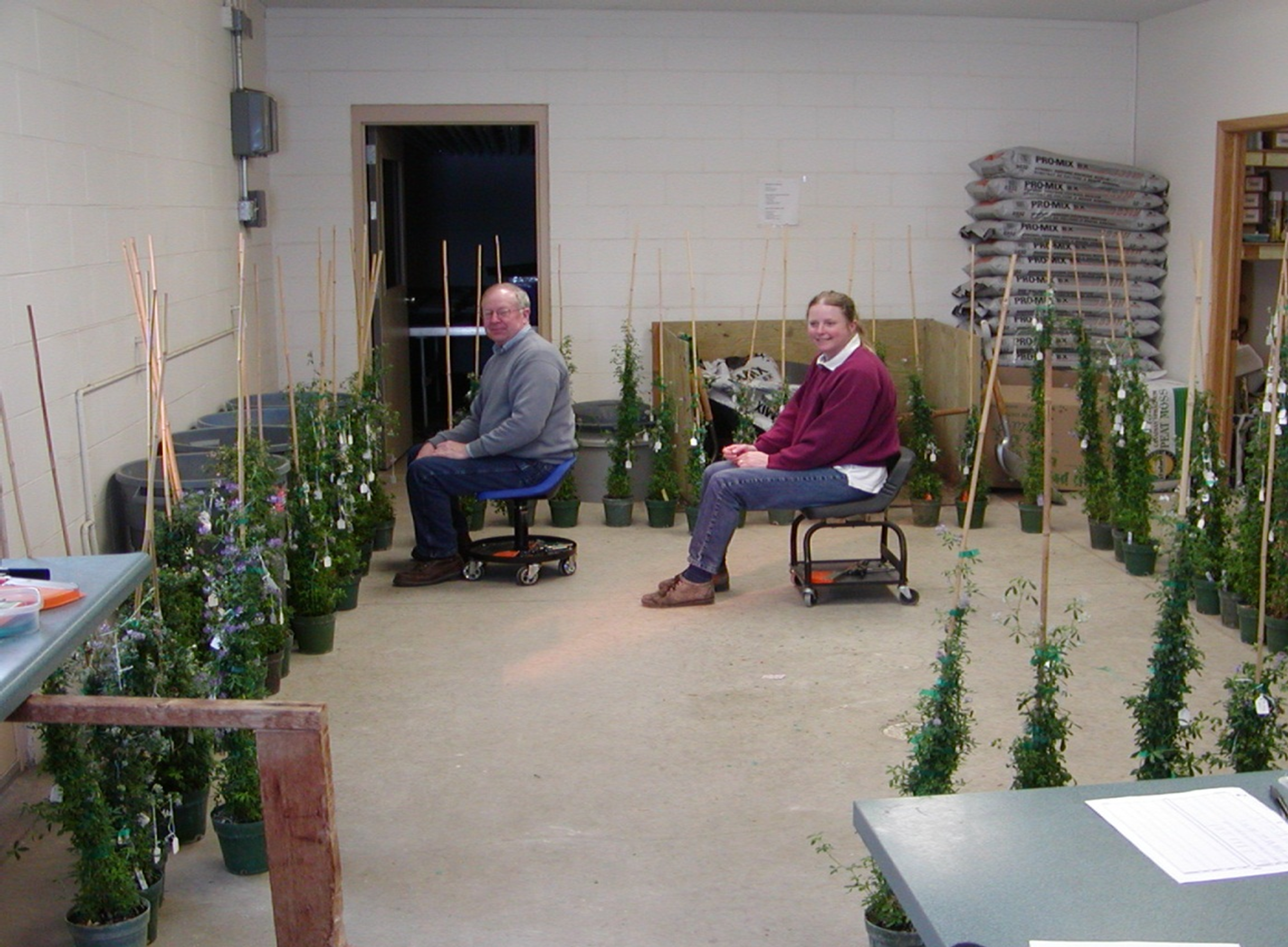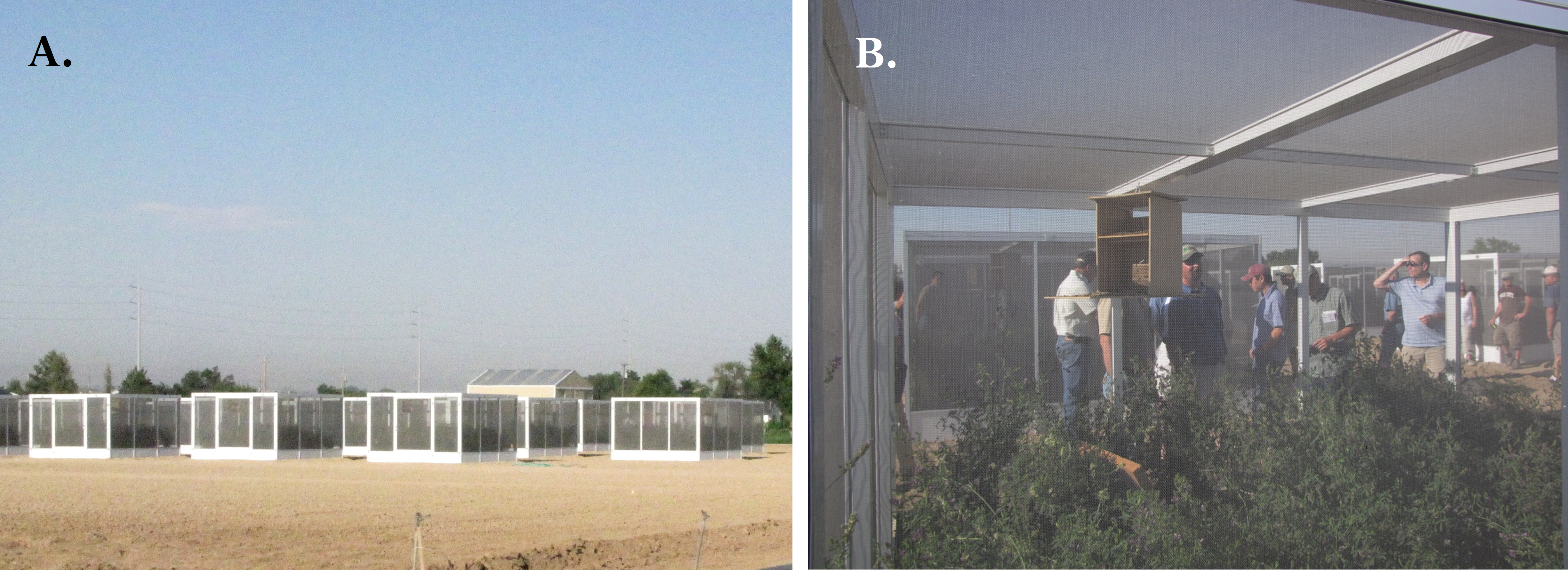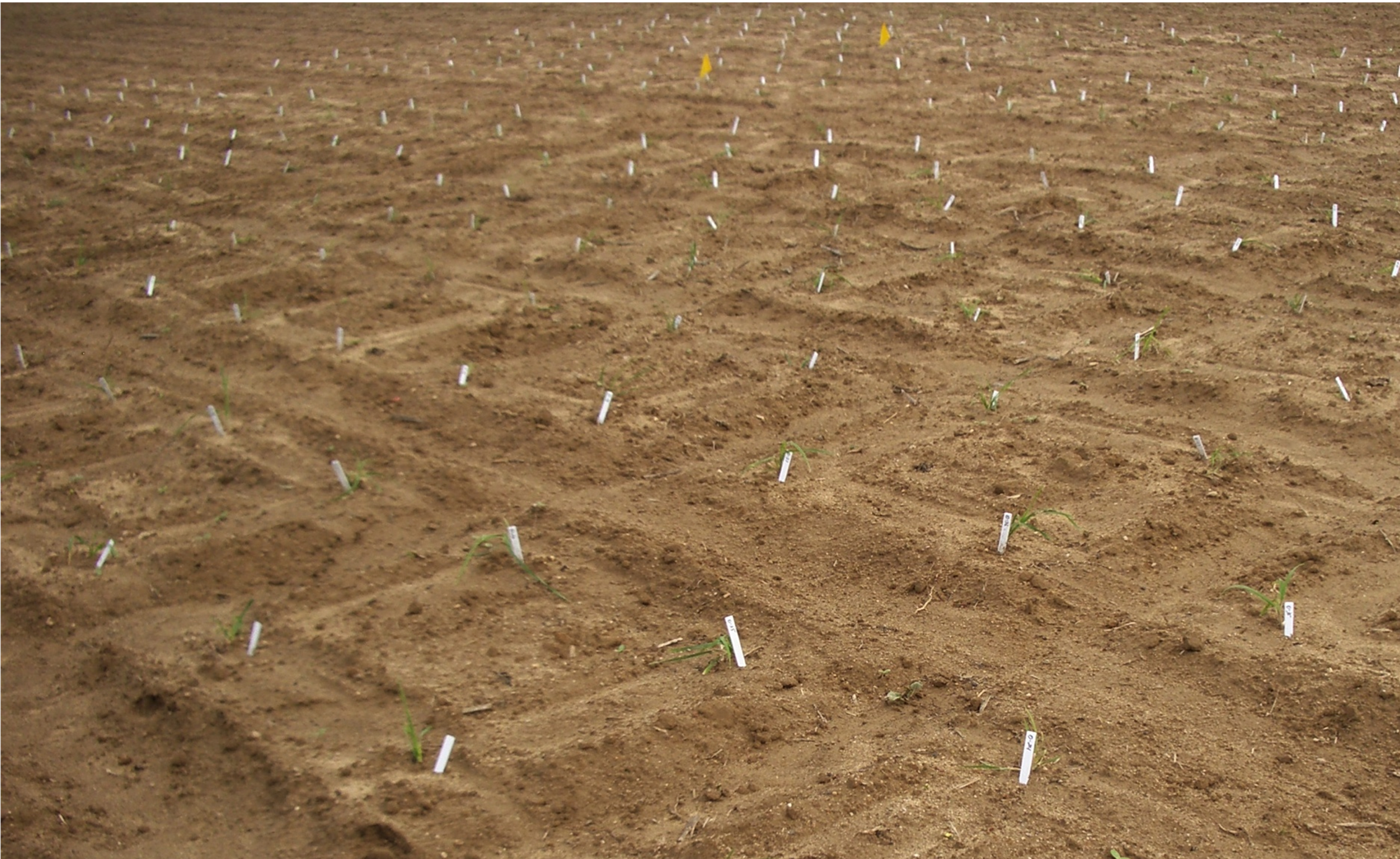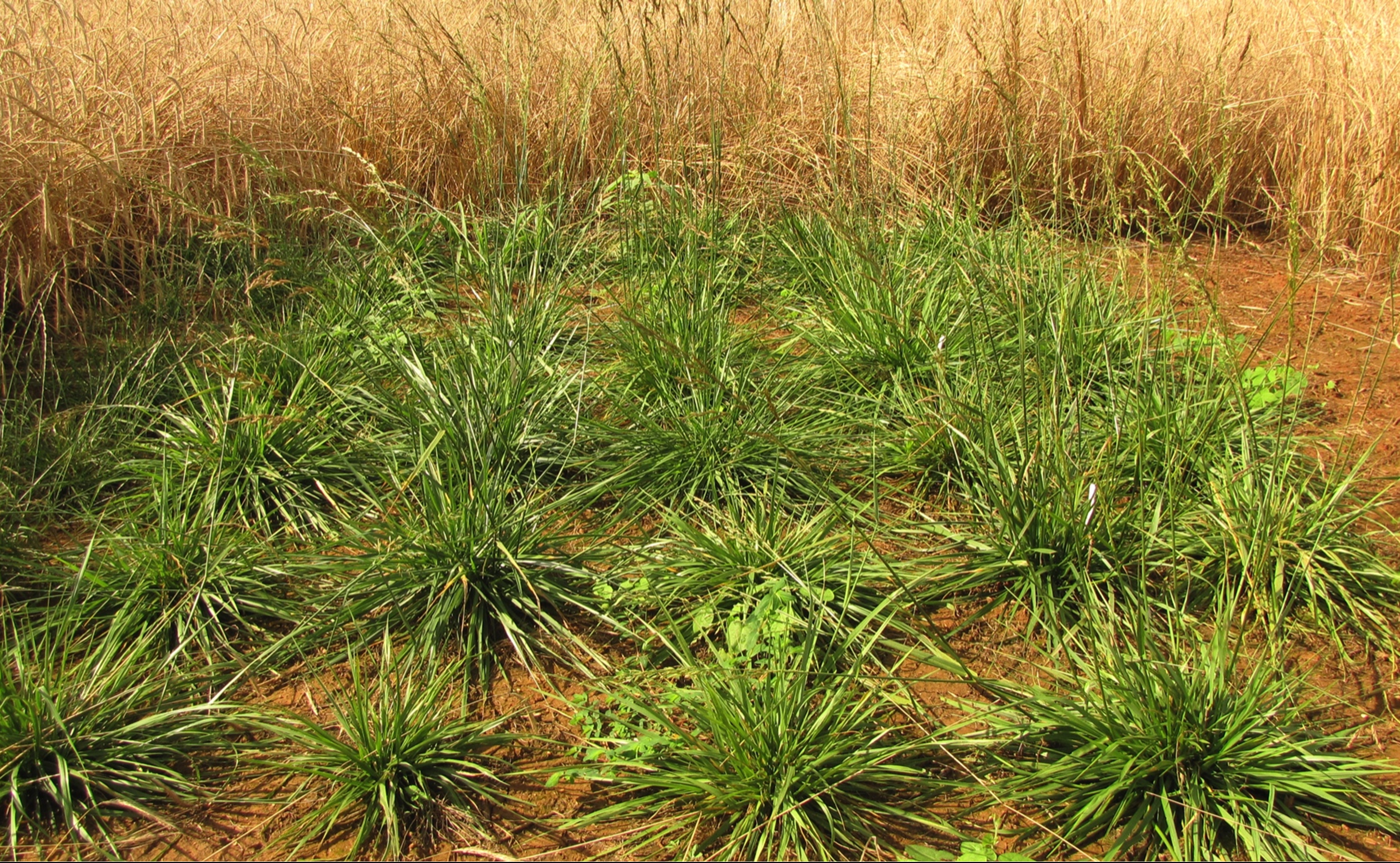Population Formation by Hybridization
Walter R. Fehr and Walter P. Suza
Readings:
- Chapter 12: Population Formation by Hybridization [pdf], Principles of Cultivar Development. Vol. 1: Theory and Technique, by Walter R. Fehr (Access the full book)
Clonal, pure-line, and hybrid cultivars
Single crosses
The mating of two elite parents is the most common procedure for developing a population used in selection of clonal and pure-line cultivars, and inbred lines used in producing commercial hybrid cultivars. The genetic makeup of the hybrid seeds obtained from crossing two parents and the number of hybrid seeds desired from a single cross is markedly different for a single cross of two clonal parents compared with two pure-line or inbred parents.
The clonal cultivars and lines used in crosses are highly heterozygous and homogeneous. The hybrid individuals obtained from a single cross represent a segregating population that is used directly to begin selection for superior new clones. The number of hybrid seeds desired from a single cross is equal to the number of individuals that the breeder wants to evaluate as clones from the cross. If a breeder wants to evaluate 1,000 individuals from a single-cross population, at least 1,000 hybrid seeds would be produced. The number of plants of each parent used for crossing would not be important because they are genetically homogeneous.
The pure lines or inbred lines of hybrids used as parents are homozygous and homogeneous. Therefore, the hybrids obtained from a single cross are heterozygous and homogeneous. To develop a segregating F2 population, the hybrid F1 plants will be self-pollinated. The number of hybrid seeds obtained from a single cross is determined by the number of F1 plants needed to produce the desired number of F2 seed. If the breeder wants a total of 1,000 F2 seeds and each F1 plant produces an average of 100 seeds, only 10 hybrid plants would be sufficient. The number of hybrid seeds would be greater than 10 to account for hybrid seeds that do not germinate and the possibility of accidental self-pollinations. Assuming that the expected germination percentage is 80% and accidental self-pollinations are 10%, 14 hybrid seed would be desired (10 divided by 0.80 and 0.90). The number of plants of each parent used for crossing would not be important because they are homogeneous.
Three-way crosses and backcrosses
A three-way or backcross population is used whenever the expected frequency of progeny with the desired traits from a single-cross population may not adequate. A three-way cross also makes it possible to combine genes for desirable traits from more than two parents. A backcross population seldom is used in developing clonal cultivars because homozygosity will occur in the progeny that is negatively associated with performance of individuals. The genetic variability expected in a three-way population is greater than that for a backcross population. In a three-way population, two parents each contribute 25% of the genes and the third parent contributes 50%. In a backcross population, one parent contributes 25% of the genes and the recurrent parent contributes 75%.
The number of hybrids seeds that need to be obtained from the three-way cross or backcross is dependent on the number of gametes that the breeder wants to sample from the single-cross F1 plants. Every gamete produced by the heterozygous, single-cross F1 will be genetically different. The chance that a gamete with superior alleles from the two single-cross parents will unite with a gamete from the third parent or backcross parent is directly associated with the number of hybrid three-way or backcross seeds obtained.
Synthetic cultivars
The types of populations used for development of synthetic cultivars are more diverse than for clonal, pure-line, or hybrid cultivars. The following are some examples.
Cultivar per se
A synthetic cultivar per se can be used as a breeding population because of its inherent heterozygosity and heterogeneity. An example is the cultivar FreedomMR red clover [JPR 2: 205-207 (2008)]. The initial population used for selection was the cultivar, Freedom! The breeder used approximately 10,000 seeds of Freedom! to begin selection.
Single cross
When two synthetic cultivars are crossed, the parents per se would be highly heterozygous and heterogeneous and the hybrid seeds obtained from crossing the two parents would be heterozygous and heterogeneous. The number of hybrid seeds that need to be obtained would be equal to the number individuals from the population that the breeder wants to evaluate. As many different plants as possible of each parent would be used for crossing to capture the genetic heterogeneity of the parent. An example is the cultivar Intercross ryegrass [JPR 5: 40-44 (2011)]. It was selected from the single cross of ‘Axcella’ x 01-ARG. The F1 seeds from the single cross were planted in the field and allowed to cross-pollinate. Selection began with the cross-pollinated seed.
Three-way cross
A three-way cross makes it possible to combine favorable genetic traits from three synthetic cultivars and lines. Nelson annual ryegrass is an example of a synthetic cultivar developed from a three-way cross [JPR 5: 45-48 (2011)]. The synthetic breeding lines TXR2000-T2 and TXR2002-T17 and the synthetic cultivar Jumbo were each planted in adjacent rows. Any plants that did not have good forage characteristics were removed and the remaining plants were allowed to cross-pollinate. The seed harvested from individual plants of the three parents was bulked to form the initial population for selection.
Polycross
In a polycross, selected plants (clones) are grown in an isolated nursery where cross-pollination occurs by wind or insect pollination. For the development of Warrior, a synthetic cultivar of indiangrass, the synthetic cultivar Oto was used as the base population (cycle 0) [JPR 4: 115-122 (2010)]. Every plant in Oto was genetically different. Twenty-nine selected clones from Oto were grown in two replications of an isolated polycross nursery and allowed to cross-pollinate by wind. Seed was harvested from individual clones and an equal amount from each was bulked to form the population for the next breeding cycle (cycle 2). In cycle 2, there were 742 clones evaluated of which 39 were selected and mated in a polycross to produce seed for cycle 3. In cycle 3, 875 clones were evaluated, of which 38 were selected and mated in a polycross. The seed harvested from the polycross of the 38 clones became the cultivar Warrior.
A polycross is commonly used by breeders of synthetic cultivars to cross selected individuals (clones) to each other. The number of clones involved in a polycross can vary from a few to more than 100. A polycross is used to (1) develop a segregating population from which new superior clones can be selected, (2) obtain half-sib seed from individual clones that can be used for evaluating their general combining ability, (3) obtain seed of an experimental synthetic for testing, and (4) obtain Syn.1 breeder seed of a new synthetic cultivar that will be released for commercial use.





More complex populations
The goal of a more complex population is to combine together favorable alleles for multiple traits from a range of synthetic cultivars and lines. Au Red Ace red clover is an example of a cultivar selected from a complex population [JPR 5: 11-13 (2011)]. It was developed from five populations that together included the parentage of 18 commercial cultivars and five plant introductions.
Review Questions
- Diagram the field layouts for mating 6 inbred parents of sorghum in a diallel for each of the following. Assume that 30 seeds are needed to plant each plot in a layout. Indicate the total number of plots and seeds needed for each layout.
- Unpaired parents with 3 dates of planting:
- Paired parents with 3 dates of planting:
- Semi-latin square with 1 date of planting:
- Bulk-entry with 1 date of planting:
- Diagram the field layout for a partial diallel of 10 inbred parents of wheat by use of circular crossing in which each parent is mated to 4 other parents.
- Diagram the field layouts for a polycross of 5 parent clones of bromegrass using the following designs. The number of replications for each design should be the same.
- Latin square
- Randomized complete-block
- For each of the following cultivars in the January issue of the Journal of Plant Registrations, indicate the type of population that was formed for selection. Indicate if the hybrid seeds obtained by artificial hybridization were genetically homogeneous or heterogeneous.
-
- Dan barley – JPR 5: 1-4 (2011)
- Awesome Kentucky bluegrass – JPR 5: 5-10 (2011)
- Au Red Ace red clover – JPR 5: 11-13 (2011)
- Essex lentil – JPR 5: 19-21 (2011)
- Aloha seashore paspalum – JPR 5: 22-26 (2011)
- Bailey barley – JPR 5: 27-39 (2011)
- UA 4910 soybean – JPR 5: 49-53 (2011)
- Barlow wheat – JPR 5: 62-67 (2011)
- Merl wheat – JPR 5: 68-74 (2011)
- Snowglenn wheat – JPR 5: 81-86 (2011)
- Snowmass wheat – JPR 5: 87-90 (2011)
- SW049029104 wheat – JPR 5: 91-97 (2011)
- What determined if the hybrid seeds obtained by artificial hybridization were genetically homogeneous or heterogeneous?
A crop line that has many genes for good agronomic traits that result in high yields in a particular environment.
The type of hybrid that is produced when two different inbreds are cross-pollinated.
In breeding clonal cultivars, hybridization is made between two clones. A large F1 population from the clones is screened as each F1 plant is unique and different from other F1s. This process is repeated over different crop cycles to identify the superior clone for release as a new cultivar.
When the alleles at a locus are different.
A cultivar whose plants are genetically and phenotypically identical.
Cultivars that are developed for self-pollinated species. Self-pollination leads to homozygosity and homogeneity.
When the alleles at a locus are the same.
A population in which two parents each contribute 25% of the genes and the third parent contributes 50%.
A population in which one parent contributes 25% of the genes and the recurrent parent contributes 75%.
A cultivar whose plants are genetically different.
A population in which selected plants (clones) are grown in an isolated nursery where cross-pollination occurs by wind or insect pollination.

